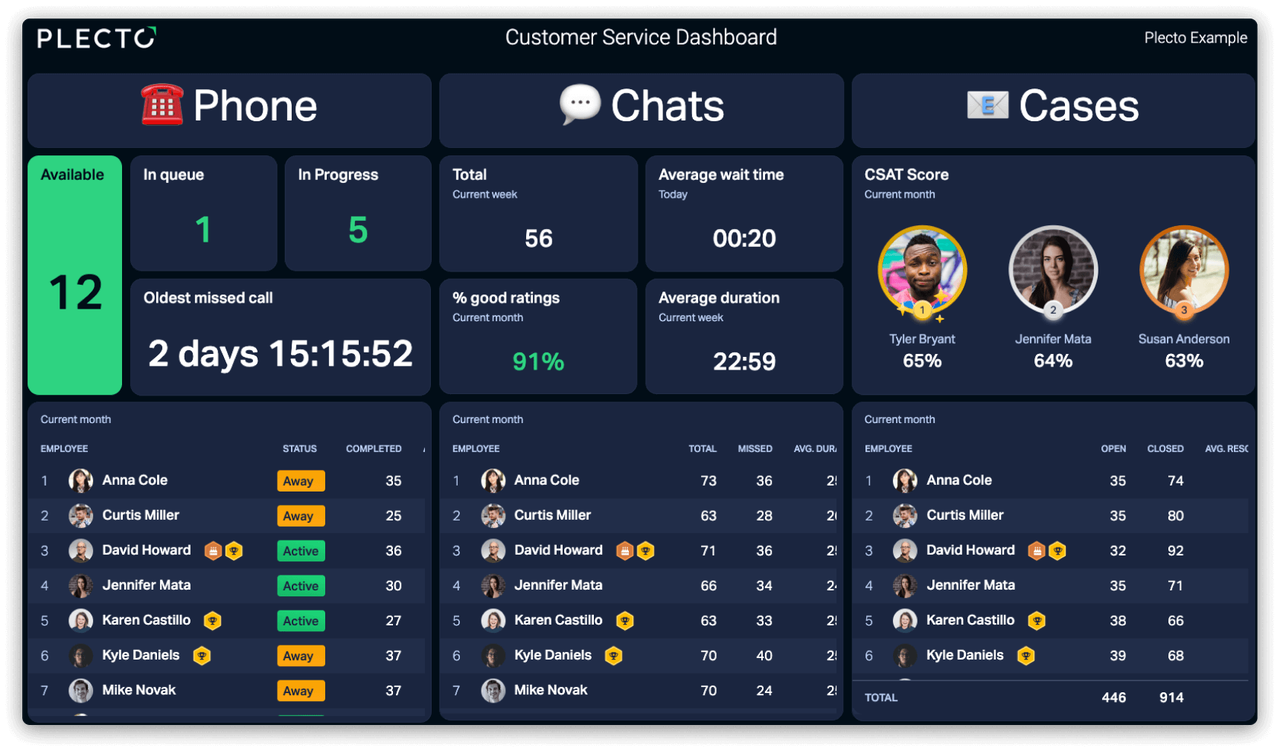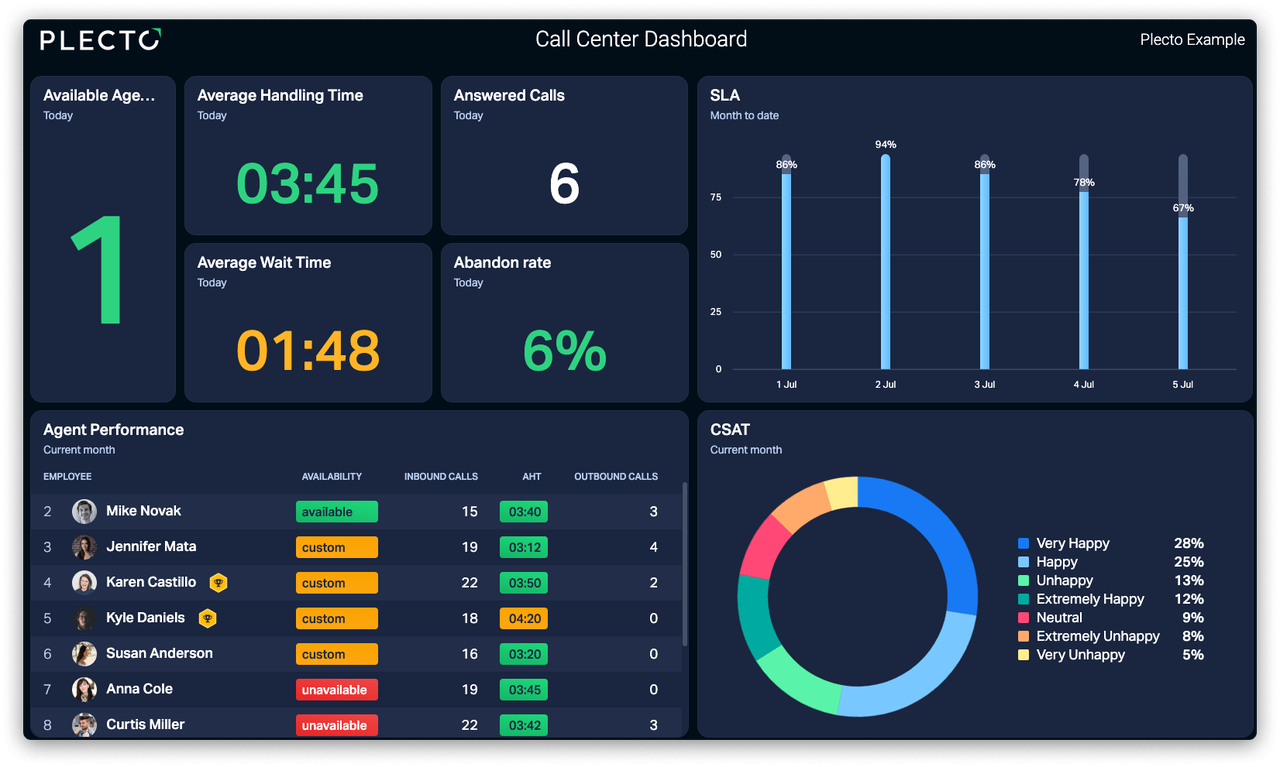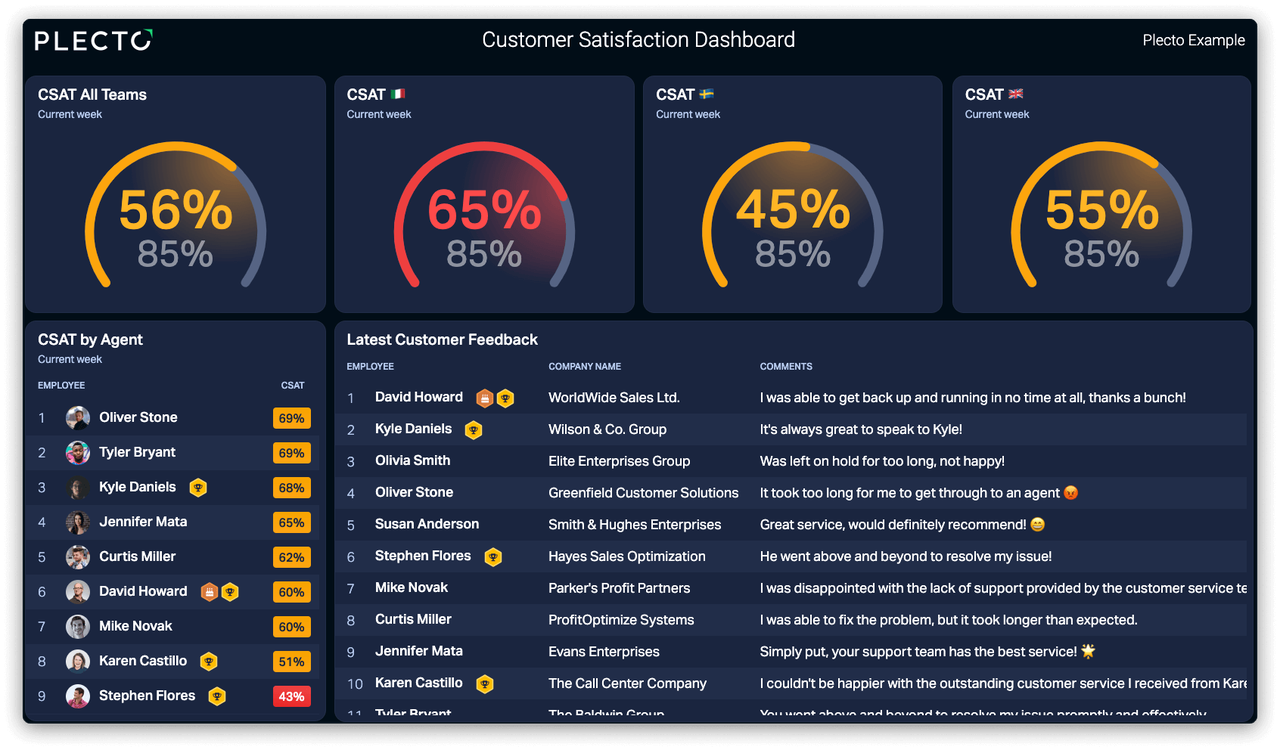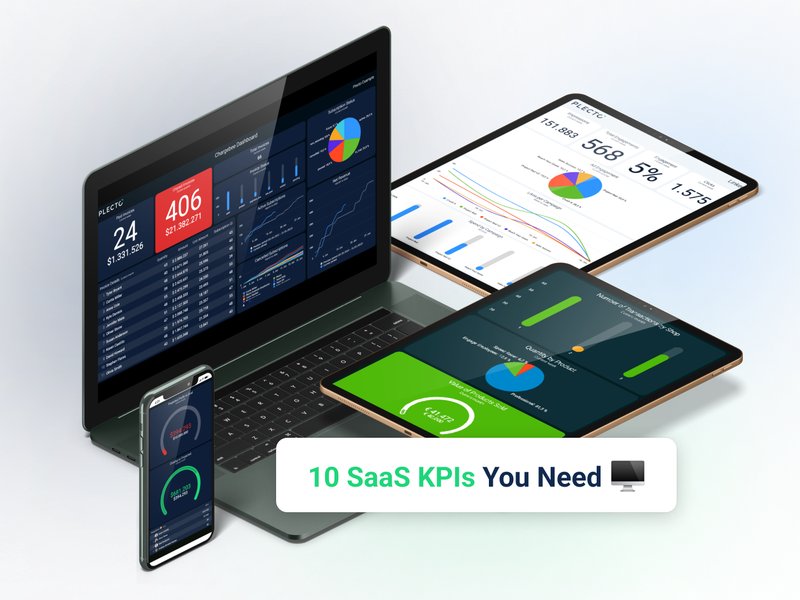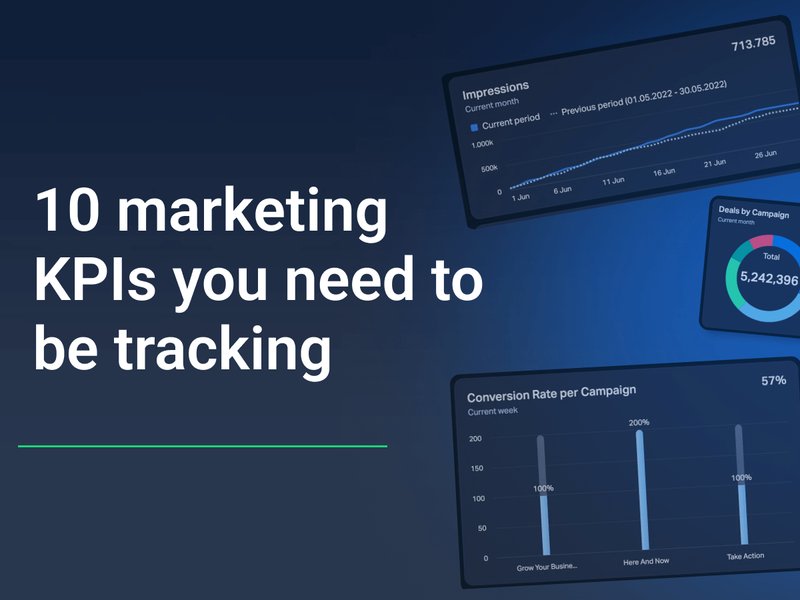Tracking the right customer service KPIs is one of the first and most important steps toward taking a data-driven approach to customer service. But how do you know that you’re tracking the right KPIs for customer service—the ones that will drive employee performance and help your company deliver world-class customer service?
The following 15 customer service KPIs will help you track performance and collect data that will empower you to make decisions that will improve customer service.
15 Important KPIs in Customer Service
Before we dive into the KPIs examples in customer service, it’s important to understand that visualizing them on a customer service KPI dashboard will help you get the most out of the data you collect. Visualizing KPIs for customer service helps everyone keep an overview of how they and the whole organization are performing, so everyone knows what they’re doing well and where they could improve.
Modern customer service is multichannel, so we’ve chosen a mix of KPIs for customer service that include call center metrics as well as a broader selection that you can use to track performance across all channels. Without further ado, here are the 15 KPIs for customer service that can give you the insights you need to deliver the best possible customer service.
1. Average Wait Time
How long a customer spends on hold before speaking with a rep directly correlates to their level of satisfaction with the service they receive. Research shows that 60% of customers feel that holding for even one minute is too long. First impressions matter, and that’s why this KPI is first on our list.
2. Average First Response Time (FRT)
Today, not all customer service happens over the phone. Customers and companies are interacting via chat, social media, email, instant messaging apps, and more! This KPI can give you a holistic view of how quickly your company is responding to initial tickets across all channels. The average FRT is 12 hours and 10 minutes, yet 46% of consumers say they expect a response in less than four hours and 12% expect a response within 15 minutes. These numbers show a huge gap between what customers expect and what they’re actually getting. Streamlining processes around this KPI could be a quick and easy win. However, it’s important to note that auto-responders should not be included when calculating this KPI—it should only track responses that add value for the customer.
3. First Contact Resolution (FCR)
One of the most important indicators of whether a customer is satisfied with the service they received is whether or not their issue was resolved quickly and to their satisfaction. If your reps are solving the majority of issues in a single contact, your customers are likely to give you stellar marks—kudos to you for having an efficient and well-trained team!
4. Average Time to Resolution
Not every issue can be solved during the first contact, so this is an important metric in assessing how efficiently more complex cases are being resolved. This KPI measures how long it takes from the customer’s first contact about the issue until the ticket is closed.
Benchmarks vary by industry, but here are some general guidelines:
- Good: < 12 hours
- Average: 12–48 hours
- Poor: 48+ hours
Keep in mind that it’s OK for some cases to take longer than others and that a quick resolution doesn’t necessarily indicate a satisfactory resolution. This is an excellent KPI to correlate with the department’s average customer satisfaction score KPI (see below).
5. Handover Rate
One of people’s biggest complaints about customer service is being transferred multiple times and having to explain their issue over and over. While sometimes it takes multiple people to resolve an issue, it should be the exception not the rule. When looking at KPIs in customer service, a high handover rate could indicate that further training is in order—either for the department or individual reps.
6. Average Call Duration
Customers want their issues resolved quickly and efficiently, and companies want to minimize costs. Keeping the average call duration to a minimum is a win all around—customers will be impressed with the company’s efficiency and reps will be able to serve more customers in less time
7. Abandoned Calls
61% of customers say that they want customer service to be quicker—and 44% will complain about substandard experiences on social media. Customers who feel they’ve been waiting for too long to speak with a rep are likely to hang up. If they get to that point of frustration, they’re likely to look into alternatives. Don’t let long wait times be the reason your customers churn.
8. Average Cost Per Resolution
You’re in business to make money, and while outstanding customer service is important, so is keeping costs to a minimum. Tracking the average cost per ticket is one of the most effective ways to optimize staffing levels and get a handle on operating costs.
If your costs are off the charts, you might want to look into self-service tools. 40% of customers who are looking for quick answers to simple questions choose self-service tools as their first option. Knowledge bases containing things like troubleshooting tips, video tutorials, and FAQs can improve customer service while reducing operating costs.
9. Average Customer Effort Score (CES)
This customer service KPI is based on a one-question survey that asks something along the line of: On a scale of 1–7, how easy was it to get your issue resolved? An average rating of 5+ means that your company’s customer service is perceived as fairly helpful and easy to contact. Lower scores could use some attention.
With 50% of customers saying they’d take their business elsewhere after one bad customer service experience, this metric can prove crucial to customer retention.
10. Volume by Channel
COVID permanently changed the customer service landscape. Now 67% of consumers say they regularly use three or more channels to engage with a single company. Understanding how your customers are contacting your company can help drive staffing decisions to ensure the adequate coverage where most customers are initiating support requests. It can also help you avoid the pitfall of de-staffing channels based on intuition, which can result in poor resolution times and low satisfaction-related scores.
11. Calls Answered Over Time
This is an important individual customer service KPI because it can help compare performance between reps to help identify who could benefit from further training—or who might have some tips that could benefit the whole department.
12. Average Customer Satisfaction Score (CSAT)
This the one of the most important KPIs in customer service because if your customers aren’t satisfied, none of the other KPIs matter. CSAT is measured based on one question, for example: On a scale of 1–5 how satisfied were you with our service?
Average positive customer service ratings are:
- Phone: 76%
- Email: 61%
- Chat: 75%
13. Net Promoter Score (NPS)
Taking it a level deeper than average customer satisfaction rating, NPS measures customer loyalty based on how likely the customer is, on a scale of 1–10, to recommend a company or product to others.
Customers generally fall into three groups:
- Detractors: 0–6
- Passives: 7–8
- Promoters: 9–10
NPS is calculated by subtracting the total percentage of detractors from the total percentage of promoters.
NPS benchmarks vary by industry, but here are some general guidelines:
- Above 0: Good
- Above 20: Favorable
- Above 50: Excellent
- Above 80: World-Class
14. Employee Turnover Rate (ETR)
Customer service personnel are as important as the customers they serve, so we’d be remiss not to mention this one on our list of the most important KPIs in customer service! This is a notoriously high-turnover business and the cost of recruiting, training, and onboarding new employees can be staggering—especially in large teams. Keeping an eye on this metric will help identify negative trends so you can take a closer look at what’s driving the attrition and make the necessary adjustments.
15. Customer Retention Rate (CRR)
Providing outstanding customer service is one of the easiest ways to retain customers, while providing lackluster service is one of the quickest ways to lose them. That’s why this customer service KPI concludes our list. A high CRR indicates that you’re providing the right level of service and should reap the rewards of higher customer lifetime values and increased profits.
Build your first dashboard.
Start your 14-day free trial today
Improve Customer Service with a Customer Service KPI Dashboard
We’ve given you 15 customer service KPIs that can help you take a more data-informed approach to customer service. But that’s only part of it. Customer service KPIs are only effective if you actively monitor and act on them. An excellent way to do this is by visualizing the data on a customer service KPI dashboard that‘s accessible to everyone in your organization.
Plecto also integrates with the most popular CRM and support systems to help visualize and track key metrics related to important customer service activities, including ticketing systems, phone calls, satisfaction ratings, and more!
Sign up for a free 14-day trial and see how Plecto can help your company meet the growing demand for world-class customer service.

